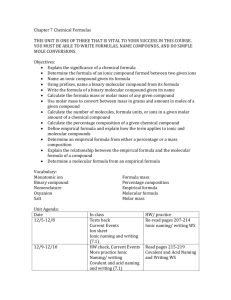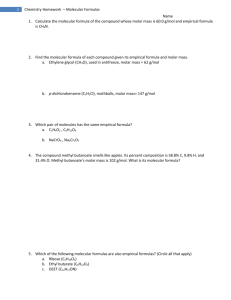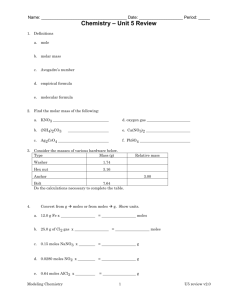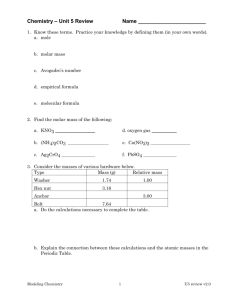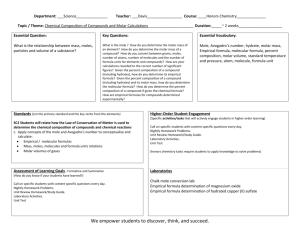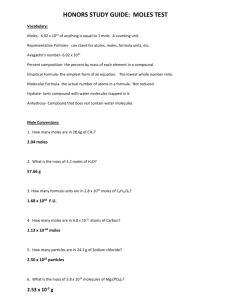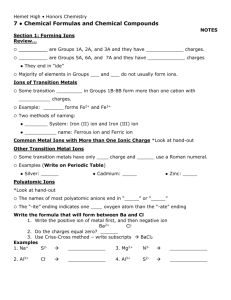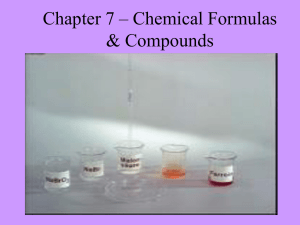Name Honors Chemistry Carpenito/Dinota Reading Guide
advertisement
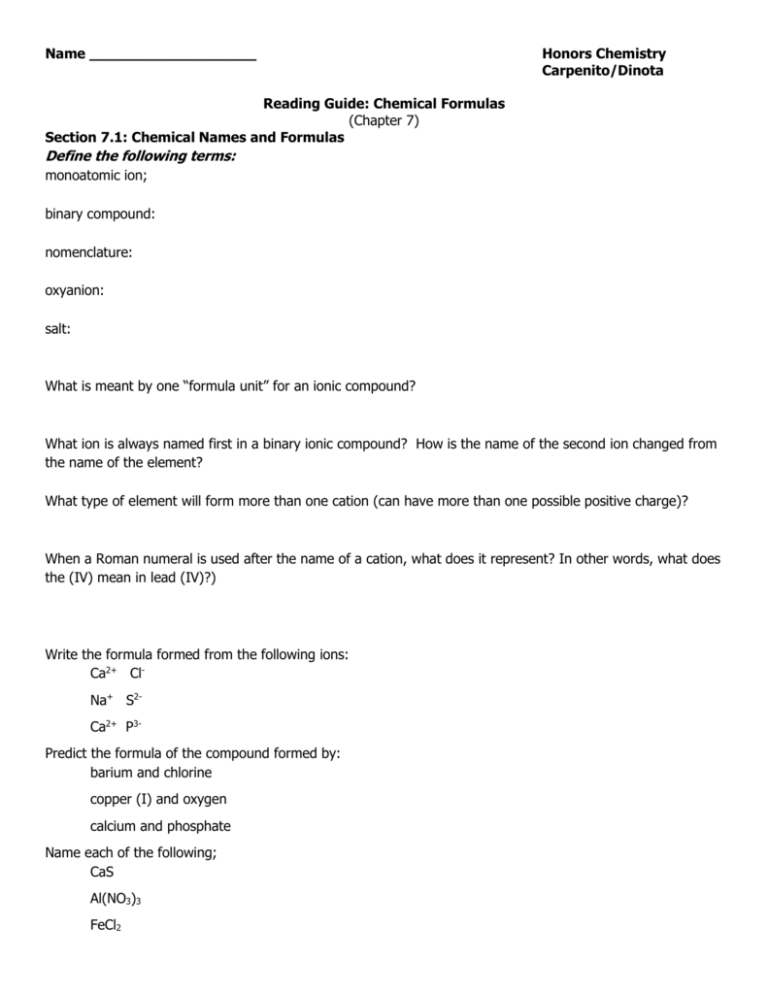
Name ___________________ Honors Chemistry Carpenito/Dinota Reading Guide: Chemical Formulas (Chapter 7) Section 7.1: Chemical Names and Formulas Define the following terms: monoatomic ion; binary compound: nomenclature: oxyanion: salt: What is meant by one “formula unit” for an ionic compound? What ion is always named first in a binary ionic compound? How is the name of the second ion changed from the name of the element? What type of element will form more than one cation (can have more than one possible positive charge)? When a Roman numeral is used after the name of a cation, what does it represent? In other words, what does the (IV) mean in lead (IV)?) Write the formula formed from the following ions: Ca2+ ClNa+ S2Ca2+ P3Predict the formula of the compound formed by: barium and chlorine copper (I) and oxygen calcium and phosphate Name each of the following; CaS Al(NO3)3 FeCl2 Why is the ratio of ions not included in the name of an ionic compound? Briefly summarize how a binary ionic compound is named. What ending is used for the second element in naming binary molecular compounds? What prefix is NEVER used for naming the first element in a binary molecular compound? Why are the “o” and “a” sometimes dropped from a prefix when naming binary molecular compounds? Name the following compounds: SO3 CCl4 IF5 Cl2O7 When naming binary acids (such as HCl), what prefix is used? what ending? When naming oxyacids, the polyatomic ion that ends in –ate is given what suffix? the polyatomic ion ending in –ite? What is NOT used when naming oxyacids? Name each of the following: HCl HClO4 HClO3 HClO2 Section 7.2: Oxidation numbers SKIP THIS SECTION FOR THIS UNIT! Section7. 3: Using Chemical Formulas Define each of the following terms: formula mass: percentage composition: Why is the term “formula mass” sometimes used in place of “molecular mass”? What is a “molar mass”? How is it related to “formula mass”? What mathematical operation will convert moles to grams? grams to moles? Calculate the molar mass of calcium carbonate and then find the mass of 4.86 moles of calcium carbonate. Calculate the molar mass of C10H6O3. How many moles of this are in a 1.56 g sample? Calculate the molar mass of ethanol C2H5OH. Show ALL WORK!! Calculate the percent composition of C2H5OH. Show ALL WORK!! Section7.4: Determining Chemical Formulas Define each of the following terms: empirical formula: molecular formula: How do chemists determine the empirical formula of a compound? When calculating the empirical formula from percent composition, why can we assume a 100 g sample of the compound? When calculating empirical formulas, what is the first conversion made once the mass of each element is known? Once the number of moles of each element is known, why is each number of moles divided by the smallest number? The subscripts in a formula identify the number of atoms of each element in a molecule…how are the subscripts related to the mole concept? If a 0.2636 g sample of nickel is reacted with oxygen to produce a nickel oxide with a mass of 0.3354 g, how many grams of oxygen were reacted? Find the empirical formula of the nickel oxide. SHOW ALL WORK!! Explain how to find molecular formula if the molar mass and the empirical formula are known.


